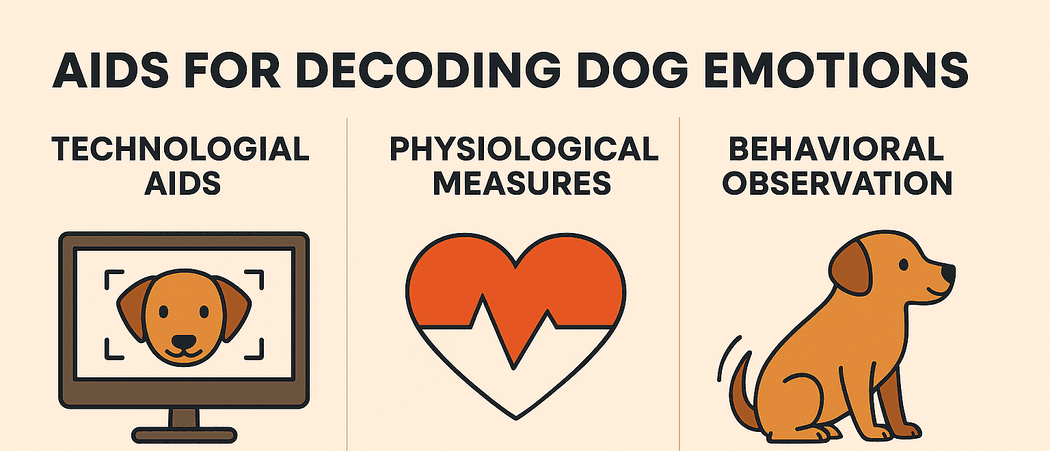The emotional bond between humans and dogs has been celebrated for millennia. Yet, despite this close relationship, recent research indicates that humans frequently misinterpret their canine companions' emotions. This misreading stems from projecting human feelings onto dogs and relying heavily on contextual cues rather than observing the dogs' actual behaviors. Understanding dog emotions accurately is crucial, not only for pet owners but also for professionals in veterinary and animal behavior fields.
The Study: Assessing Human Interpretation of Dog Emotions
Researchers at Arizona State University conducted experiments to evaluate how humans perceive dog emotions. Participants were shown videos of dogs reacting to various scenarios, such as being offered a leash or encountering a vacuum cleaner. Interestingly, when the contexts of these videos were altered—showing the same dog behaviors but in different situations—participants' interpretations of the dogs' emotions changed accordingly. This suggests that humans often rely more on situational context than on the dogs' actual behavioral cues when assessing their emotions.
Holly Molinaro, a Ph.D. student involved in the study, noted, "People do not look at what the dog is doing; instead, they look at the situation surrounding the dog and base their emotional perception off of that." This highlights a significant gap in accurately understanding dog emotions, emphasizing the tendency to anthropomorphize canine behavior.
Understanding Dog Emotions in Veterinary and Animal Behavior Professions
For professionals working with animals, understanding dog emotions is not just a matter of empathy—it is fundamental to ethical and effective care. Misinterpreting a dog’s emotional state can lead to elevated stress, compromised safety for both the animal and handler, and even long-term behavioral complications.
In veterinary clinics, emotional misjudgments may result in improper restraint or sedation, heightened fear responses during examination, and misdiagnoses due to stress-induced physiological changes. For animal behaviorists and dog trainers, developing behavior modification protocols based on incorrect emotional interpretations can hinder progress, reinforce undesirable behavior, and damage trust between human and animal.
Advanced Lab Management Certificate
The Advanced Lab Management certificate is more than training—it’s a professional advantage.
Gain critical skills and IACET-approved CEUs that make a measurable difference.
Accurate and context-aware interpretation of emotional cues is central to:
- Behavioral Assessments: Pinpointing emotional drivers of behaviors such as aggression, avoidance, fear-based reactivity, or compulsive disorders. For example, identifying whether barking is a signal of excitement, anxiety, or territorial aggression.
- Training Programs: Tailoring reinforcement schedules and training techniques to the emotional thresholds of individual dogs. A fearful dog may need desensitization protocols, while a confident one may respond well to operant conditioning.
- Welfare Evaluations: Ensuring that dogs housed in shelters, research environments, or boarding facilities experience minimal emotional distress, through regular behavioral wellness checks and enrichment protocols that target emotional balance.
Ultimately, the ability to accurately assess and respond to a dog's emotions enhances both the quality of care and the success of intervention strategies across all animal care disciplines.
Tools and Techniques for Understanding Dog Emotions Accurately
To overcome the tendency of misinterpreting dog emotions, professionals can leverage a growing suite of scientific tools and structured methodologies aimed at improving objectivity and precision in emotional assessment.

Professionals can leverage a growing suite of scientific tools and structured methodologies aimed at improving objectivity and precision in emotional assessment. OpenAI (2025)
Behavioral Observation
Structured behavioral analysis remains a cornerstone of emotion recognition in dogs. Professionals are trained to decode specific postures and movements—such as tail wag direction and speed, muscle tension, lip licking, yawning, or gaze aversion. The use of ethograms, standardized charts listing dog behaviors and their potential emotional correlates, helps reduce subjective bias.
Physiological Measures
Complementing behavioral observation, physiological biomarkers provide concrete indicators of internal emotional states. Monitoring heart rate variability (HRV) offers real-time data on autonomic nervous system activity, often used to distinguish between stress and relaxation. Salivary cortisol testing is another non-invasive tool that quantifies stress hormone levels, aiding in assessments of chronic stress or fear.
Technological Aids
Emerging technologies are enhancing the precision of emotional analysis:
- Infrared Thermography: Detects changes in surface temperature, such as in the ears or nose, which can signal stress responses.
- Wearable Biometric Sensors: Devices that measure metrics such as pulse, respiration rate, and motion patterns to infer emotional shifts over time.
- AI-Powered Facial Recognition Software: Used experimentally to interpret micro-expressions and facial tension patterns in dogs, offering another layer of emotional insight.
These tools not only provide objective, quantifiable data but also support longitudinal tracking of emotional states, which is invaluable in therapeutic, training, and research settings.
Understanding and Misinterpreting Dog Emotions
The Arizona State University study underscores the importance of moving beyond contextual assumptions and anthropomorphism when interpreting dog emotions. For professionals in veterinary and animal behavior fields, adopting objective, behavior-based assessment methods is crucial. By enhancing our understanding of canine emotional expressions, we can improve animal welfare, training outcomes, and the human-animal bond.
Frequently Asked Questions (FAQ)
Why do humans often misinterpret dog emotions?
Humans tend to project their own emotions onto dogs and rely on situational context rather than canine-specific behavioral cues. This can lead to misunderstandings, especially when dogs display similar behaviors in different emotional contexts.
What are the most reliable indicators of a dog's emotional state?
Reliable indicators include body language cues such as tail position, ear movement, posture, and facial expressions. Physiological markers like heart rate variability and cortisol levels, combined with behavioral observation, offer the most accurate emotional assessment.
How can professionals improve their understanding of dog emotions?
Professionals can improve their accuracy by utilizing standardized behavioral ethograms, physiological monitoring tools, and advanced technologies like infrared thermography and facial recognition software. Ongoing education and training in animal behavior science also play a crucial role.












